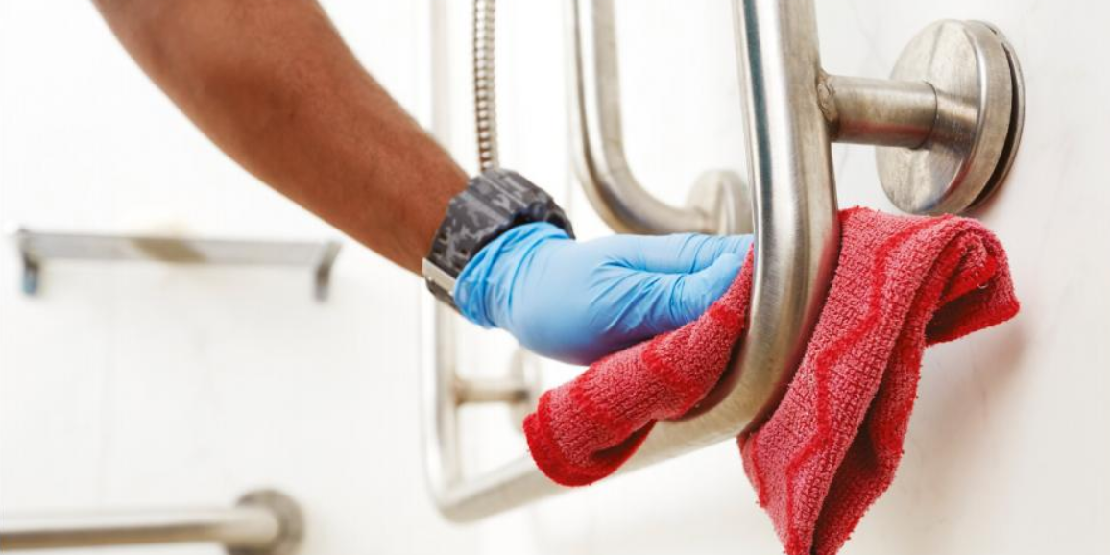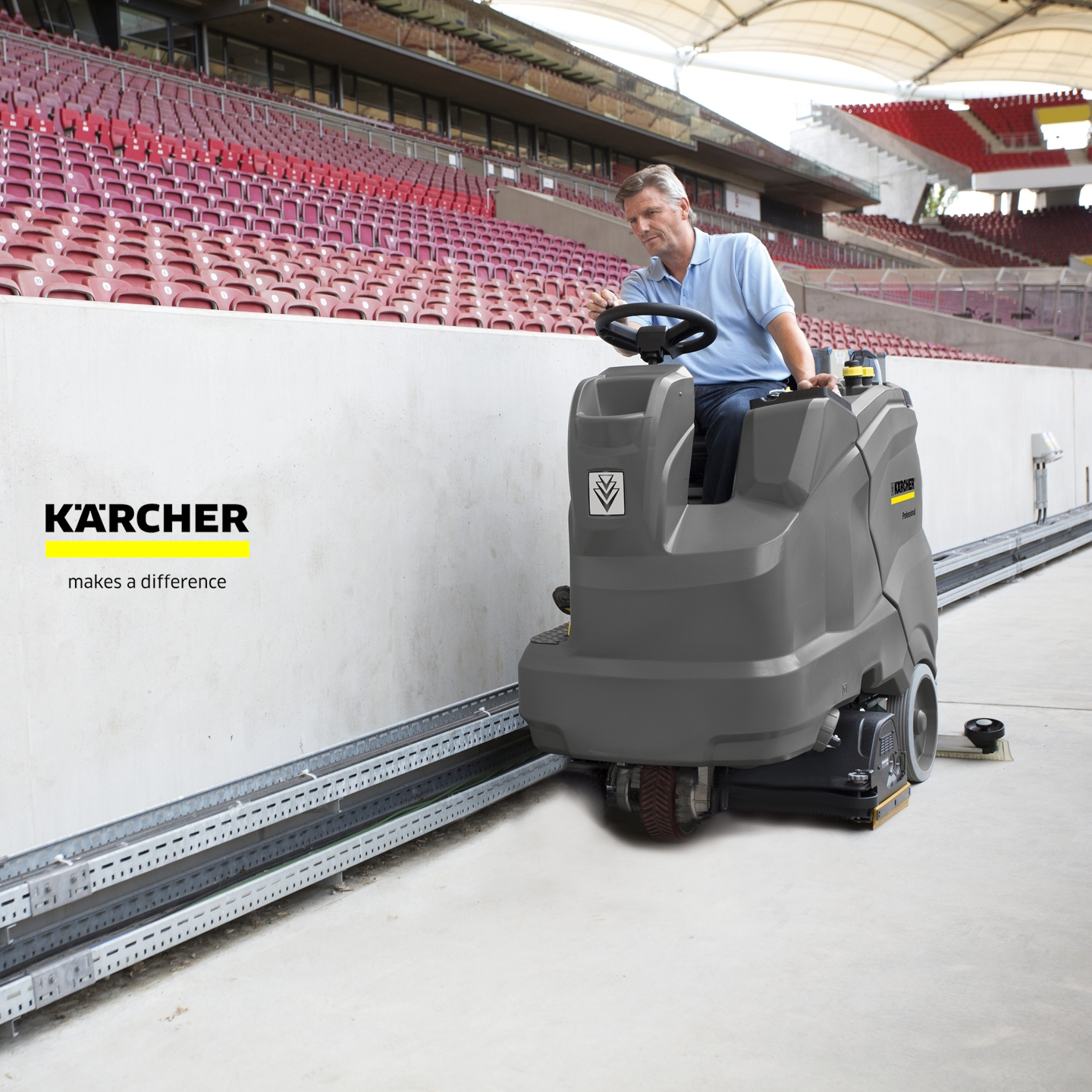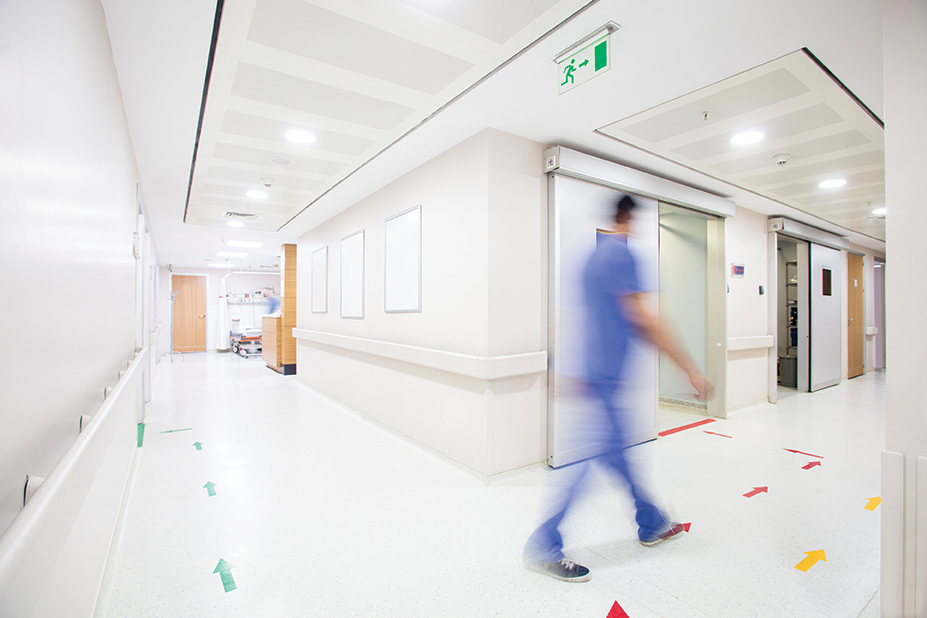
Australians come into contact with the healthcare system more than they may realise, from simply visiting the local GP for a prescription, to more acute conditions or complex treatments such as a trip to the emergency department or operating theatre.
The rise in Australia’s contact with the healthcare system is evident in rising costs, which have grown significantly in recent years. The Australian Institute of Health and Welfare’s 16th biennial report revealed spending has grown by 50 per cent, between 2006–07 and 2015–16, from $113 billion to $170 billion.[1]
Australians expect high-quality health care at every touchpoint. Overall, most Australians receive excellent healthcare and have very positive healthcare outcomes. Yet, some patients acquire infections, which can lead to serious harm.
Healthcare-associated infections (HAIs) occur through contact with microorganisms — such as bacteria and viruses – in a healthcare or Aged Care environment. In 2008, Cruickshank and Ferguson (Australian Commission on Safety and Quality in Health Care) estimated about 200,000 HAIs occurred each year in Australia[2], making it the most common complication affecting patients.
In a critical sector such as our healthcare system, daily challenges such as HAIs can have potentially serious consequences for patients and staff. Effective prevention practices can protect everyone coming into contact with the healthcare system and greatly improve patient safety.
Every healthcare acquired infection (HAI) is preventable. The recommended strategies include a combination of hand hygiene, the appropriate use of antibiotics and immunisation of health-care workers. Strong, effective and standardised cleaning practices also play a major role in removing potentially harmful microorganisms from touchpoints and surfaces.
The National Safety and Quality Healthcare Service Standards (NSQHS)[3] aims to protect the public from harm and improve the quality of the health service. The standards included cleaning as a crucial component of a Healthcare organisation’s Infection Prevention and Control Systems (3.11). Every health service organisation must demonstrate it has processes to maintain a clean and hygienic environment and is equipped to respond to environmental risks, can clean and disinfect the environment in line with recommended cleaning frequencies and provides training for specialised personal protective equipment.
A healthcare environmental services team, responsible for maintaining the health and hygiene of the environment, are on the front line of infection prevention every day, solving the ongoing challenges for hospitals or healthcare facilities by maintaining impeccable standards and efficient daily practices.
While they are protecting patients and healthcare workers, it’s vital the environmental services cleaning staff experience high standards of workplace safety, to be protected from injury and illness as well.
Modern cleaning technology assists the healthcare industry to protect patients, healthcare workers and environmental services staff, through a total solution that addresses every aspect of hygiene and safety in an innovative way.
This new integrated system – based on the power of superior microfibre – tackles every element of the cleaning protocol – from efficacy to durability and ergonomic and sustainability.
Rubbermaid Commercial Products (RCP) has led the way in pioneering commercial microfibre cleaning systems, helping many healthcare facilities in Australia overcome the many challenges of keeping their environments hygienic and healthy.
Tackling infection prevention and control through improved cleaning systems
In Australian healthcare settings, patients and aged care residents are often in close proximity to each other. Hence, all touchpoint and surfaces in patients’ rooms, bathrooms, waiting areas and communal spaces need to be attended to, on a regular basis. Standardising cleaning practices through systematic cleaning processes ensures hygienic results are consistently achieved across all areas.
This was the experience for Amana Living, a not-for-profit residential aged care organisation in WA with 13 sites, which undertook a major project to standardise and streamline its environmental cleaning services, with the goal to achieve exceptional hygiene and safety. Amana Living rigorously tested multiple cleaning systems, before choosing to implement an RCP HYGEN microfibre system into its cleaning protocols.
Considering all factors such as water-usage, durability, productivity and time-efficiency Amana Living found the RCP microfibre solution was the superior system and would allow an increase in cleaning frequency by 150 per cent, a reduction of water usage by 280,000 litres/year and ultimately deliver a consistent, standardised cleaning result. Furthermore, mopping with microfibre is fast-drying, meaning floors were touch-dry within minutes reducing the risk of slips and falls to residents, visitors and staff.
Similarly, when Fiona Stanley Hospital (FSH) opened in 2014, its environmental service contractor set out to provide a higher standard of infection prevention with a more efficient, effective cleaning system.
The implementation of RCP HYGEN microfibre cloths and mops across the new state-of-the-art hospital had many benefits. Cleaners were able to turnaround a room much faster as they can cover more floor space with the microfibre mops. Confidence in the product was high, with research proving it is a superior system to traditional methods in terms of removing pathogens and organisms from the point of cleaning.
Using an advanced microfibre system enabled the environmental services team to consistently provide a hygienically-clean facility, prevent the spread of infection and maintain high standards across the facility.
Tackling the challenge of WHS for environmental service professionals
High standard of hygiene and greater productivity should not come at the cost of compromised safety for a healthcare organisation’s environmental services staff.
Performing rigorous and thorough cleaning protocols can put considerable strain on the lower back, neck, shoulders, knees and arms, posing a workplace health and safety (WHS) risk to staff.
According to Safework Australia figures from 2012 -13, work-related injuries and disease cost the Australian economy $61.8 billion, or 4.1 per cent of GDP.[4] In fact, in 2016 – 17, there were 106,260 serious claims for work-related injury or illness. The median time lost for each claim was 5.6 weeks, with the median compensation paid for claims for $11,500.[5]
To reduce the WHS risk for its staff, Royal Melbourne Hospital (RMH) introduced microfibre mopping systems, which included microfibre clothes and microfibre mop pads. This system, by RCP, has been designed to be lightweight and more ergonomic than traditional wet mops.
With the help of biometric analysis firm DorsaVi, RMH conducted a comprehensive manual handling assessment using ViSafe wireless motion sensors to measure how a cleaner moved when using both the Rubbermaid HYGEN microfibre mop and a traditional wringer mop and bucket system to clean a hospital room and bathroom.
The ViSafe assessment found overall, the Rubbermaid HYGEN microfibre mop posed a 20 per cent lower movement risk than traditional wet mopping. Furthermore, HYGEN microfibre mopping action was completed closer to the body’s core than traditional wet mopping and the sensors detected a lower muscle activity (EMG) for lower back and shoulder with microfibre.
The implementation of microfibre mops assisted RMH staff to considerably reduce the level of manual handling stress while achieving noticeably cleaner, hygienic results.
Improving health outcomes while enhancing the healthcare consumer experience
Exceptional hygiene and customer safety in an aged care facility are just as crucial as creating a welcoming, home-like atmosphere for residents. Sometimes these two priorities are at odds with each other, given some cleaning systems in aged care rely on harsh, strong-smelling chemicals and large amounts of water to achieve a hygienic result.
Water and chemical usage are a key consideration in an aged care setting with the emphasis on creating a home-like atmosphere for residents to feel comfortable and relaxed. The need to keep high-traffic areas clean with traditional mop systems often results in wet floors or strong-smelling chemical odours – something that can detract from a welcoming and homely feel. Wet floors also pose a slip hazard; thus residents may be restricted from moving freely during cleaning, which may be confusing and disruptive for some.
Research by the Harvard School of Medicine[6] outlined the dimensions of modern concepts of customer care; this included respect for patients’ preferences and values, emotional support, physical comfort, information and communication, coordination of care and involvement of family and friends.
Uniting AgeWell, a premium aged care organisation for older Australians in Victoria and Tasmania, aims to make residents and visitors feel at home across all 20 residential aged care sites. Achieving a comfortable environment wasn’t simply about aesthetics – it demands exceptional hygiene, a focus on safety and responsiveness to resident needs.
Uniting AgeWell undertook a market-wide search for a cleaning solution that would help build efficiencies within the cleaning process and ensure the organisation provided a hygienic, healthy and happy environment for residents.
After careful consideration, Uniting AgeWell partnered with RCP and implemented a comprehensive system comprising of washable microfibre clothes, disposable microfibre clothes and cleaning carts across its various sites.
The flexible, user-friendly solution allowed Uniting AgeWell to shift from using cleaning contractors to an in-house model. This change enabled the organisation to be more responsive to customer requests and clean more efficiently and effectively; two crucial components of making hygiene and response times a top priority.
The result was an increase in productivity, with the total number of rooms cleaned in a 6-hour period increasing by 129 per cent (from 14 to 32 rooms). Furthermore, high touch point areas such as phones, door handles, remote controls etc. were found to be cleaned more thoroughly.
The standards of efficiency and customer care have significantly increased since moving to a microfibre system. It was important for staff to establish the best methods of cleaning for various environments and the most efficient ways to complete the job.
How RCP’s superior microfibre tackles healthcare challenges
Cleaning technology that is effective, efficient, durable and ergonomic has proved a game changer in tackling the major challenges faced by the healthcare industry. One of the biggest and most common challenges for a healthcare or aged care facility is balancing efficacy in infection control with productivity and labour costs.
When mopping with a traditional wet mop, the environmental services staff member would generally empty and refill buckets every three rooms to reduce the risk of cross-contamination. This takes time and involves the repetitive lifting of mop buckets – placing significant stress and strain on the lower back, neck and shoulder. If the nearest cleaning cupboard or trolley is some distance away, time walking back and forth also slows productivity.
Eliminating the need to fill and change buckets of water saves time and reduces manual handling risk – and this is a major benefit of a microfibre cleaning system. A superior Rubbermaid microfibre system, for example, involves a different workflow and some new steps in preparation – such as charging 20 cloths and floor pads in solution at the beginning of a cleaning round, rather than stopping to empty and refill the bucket every three rooms. The time saved plus the reduced strain on the body is significant.
Microfibre, as the name implies, is specially designed with incredibly fine fibres, 20 times lighter than a human hair. Superior-quality microfibre uses different polymers to create positive attraction, so the fibres trap and hold dirt and grease particles amongst the fibre, reducing the risk of transfer.
Furthermore, the colour-coded system inherent in RCP’s HYGEN products – with different coloured buckets, cloths and mop pads – simplifies and streamlines the cleaning process. Facilities are able to use different colours of mops and cloths to suit the tasks and challenges at hand.
Cost efficiencies are achieved too. Highly-durable, washable mops and clothes reduce the overall product lifetime investment, while improving the organisation’s environmental impact by reducing landfill waste.
The experience of a growing number of healthcare and aged care organisations has been that implementing RCP HYGEN microfibre system delivered many positive benefits for the patient, healthcare worker, environmental services staff and the organisation.
It’s not often that innovative technology can solve multiple challenges in a sector, especially one as complex as healthcare, yet the industry’s shift to microfibre has indeed played a big part of tackling the major challenges of infection control, WHS, and ultimately delivered improved patient outcomes.
[1] Australian Institute of Health & Welfare, Australia’s Health 2018
[2] https://www.safetyandquality.gov.au/wp-content/uploads/2008/01/Reducing-Harm-to-Patient-Role-of-Surveillance1.pdf
[3] https://www.safetyandquality.gov.au/wp-content/uploads/2017/12/National-Safety-and-Quality-Health-Service-Standards-second-edition.pdf
[4] The Cost of work related injury and illness for Australian employers, workers and the community 2012-13
[5] Work related injury and disease – Key WHS statistics Australia 2018
[6] Patient-centred care: Improving quality and safety through partnerships with patients and consumers


Gary Oskay on: Industry Leaders Forum: Wayne Hill, CEO, RapidClean Group
John Ford on: Industry Leaders Forum: Joe Camilleri, Managing Director, Central Cleaning Supplies
Jasmine Soh on: Empowering the Oceania Cleaning and Hygiene Industry: INCLEAN Unveils Its Unified Magazine